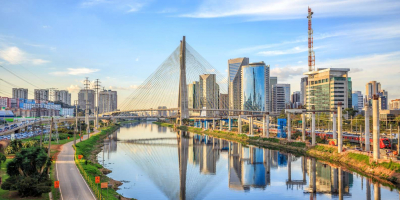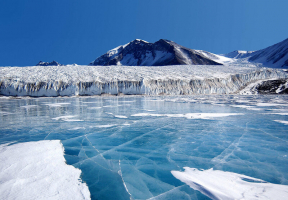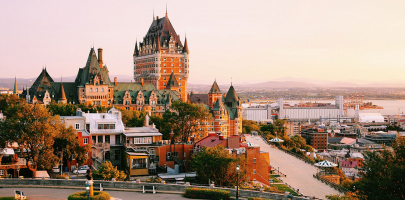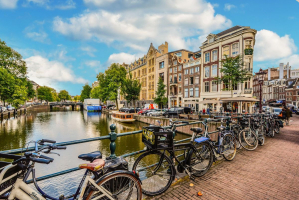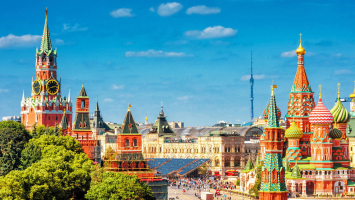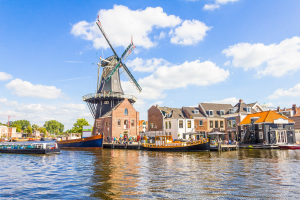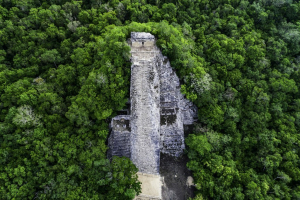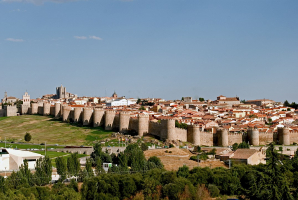Top 7 Major Cities in Antarctica
Curious about major cities in Antarctica? The second-largest landmass in the globe is Antarctica, the southernmost continent. Despite having the reputation of ... read more...being the world's windiest, coldest, and driest region, many people reside in Antarctica. These clever, daring, and courageous individuals can be found at the bases in Antarctica, which are referred to as the continent's "cities." The following is a list of the major cities in Antarctica.
-
McMurdo Station is a U.S. Antarctic research facility located on the southernmost point of Ross Island, in the territory of Ross Dependency, claimed by New Zealand, off the coast of McMurdo Sound in Antarctica. The location has Lt. Archibald McMurdo's name because he was in charge of the HMS Terror, the first vessel to investigate the area. McMurdo Station is one of the major cities in Antarctica.
On February 16, 1956, as a part of the US Mission "Operation Deep Freeze," McMurdo first opened its doors. Although it was initially intended to be a naval facility, the massive science station, which has a heliport, a harbor, and three airfields, is now operational. One of three year-round United States Antarctic science facilities, the station is the largest settlement in Antarctica and can house up to 1,258 people. McMurdo is the first stop for all personnel and goods heading to or coming from Amundsen-Scott South Pole Station. The smaller Scott Base in New Zealand is 3 kilometers (1.9 miles) away from McMurdo by car.
McMurdo is a base in the strictest sense of the word, yet with its 100 buildings and two Wells Fargo ATMs, it can be compared to a city.
Location: Ross Island, Ross Dependency; claimed by New Zealand.
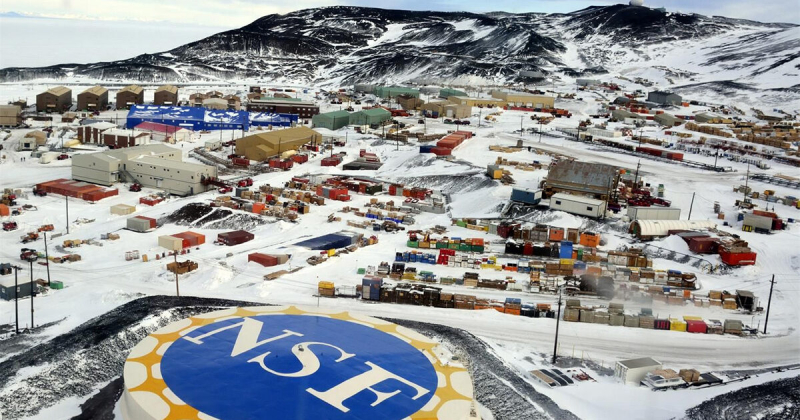
Photo: planetary 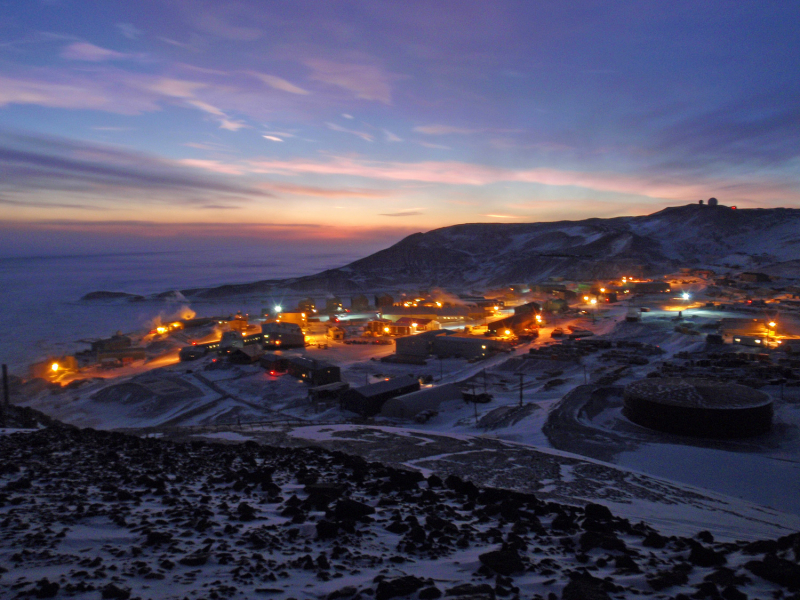
Photo: coolantarctica -
The Amundsen-Scott South Pole Station is situated on a plateau and rises 9,301 feet above sea level. This city in Antarctica bears the names of two idealistic team captains who attempted to reach the South Pole: Roald Amundsen and Robert F. Scott.
The Navy Seebees constructed the Amundsen-Scott South Pole Station in November 1956 to aid in the geophysics of the Polar regions research. It is currently run by the National Science Foundation's Division of Polar Programs in keeping with its intended use.
It is home to the Martin A. Pomerantz Observatory for Astrophysics and the Atmospheric Research Observatory, making it the most southerly settlement on the planet. A minor biomedical research facility, a number of lodging options, and the Jack F. Paulus Skiway airport are also located there.
Its 50 to 200 individuals frequently face "long days and nights" due to its polar position. To illustrate, the Amundsen-Scott South Pole Station receives constant sunlight for six months. And for the following six months, the base is completely in the dark, with temperatures falling as low as -99 degrees Fahrenheit.Location: Geographic South Pole, Antarctic Plateau, Antarctica
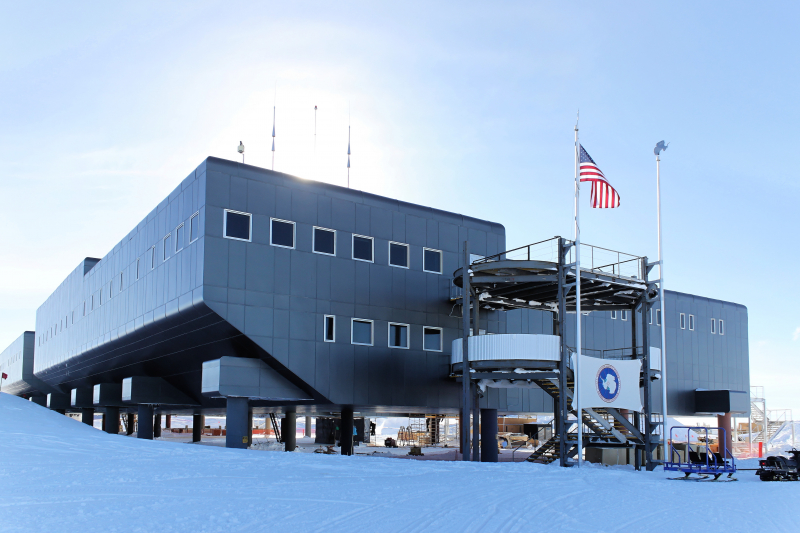
Photo: wikipedia 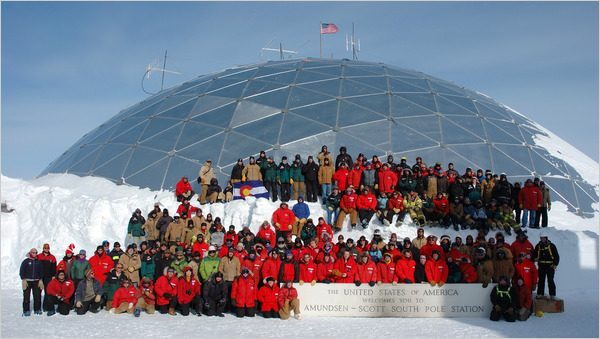
Photo: nytimes -
On the Davis Sea's Antarctic coast in Queen Mary Land, Antarctica, the Mirny Station is a Russian (previously Soviet) pioneering science facility. The station, run by the Arctic and Antarctic Research Institute, has the name Mirny in honor of Mikhail Lazarev's support ship, which he commanded on the Vostok during the First Russian Antarctic Expedition, which Fabian Gottlieb von Bellingshausen headed.
The first Soviet Antarctic Expedition officially inaugurated the station on February 13, 1956. Originally used as the primary base for the Vostok Station, which Progress Station now fulfills, it was 1,400 kilometers (870 miles) from the shore. It accommodates up to 169–200 persons in 30 buildings during the summer and roughly 40–50 scientists and technicians during the winter. The area's average temperature is 11 °C (12 °F), and more than 200 days a year have wind gusts of more than 15 m/s (49 ft/s), with cyclones on occasion.
Glaciology, seismology, meteorology, polar light observation, cosmic radiation, and marine biology are the primary fields of study. Fire damaged Mirny Station on Sunday, June 21, 2020.
Location: Queen Mary Land, Antarctica, on the Antarctic coast of the Davis Sea
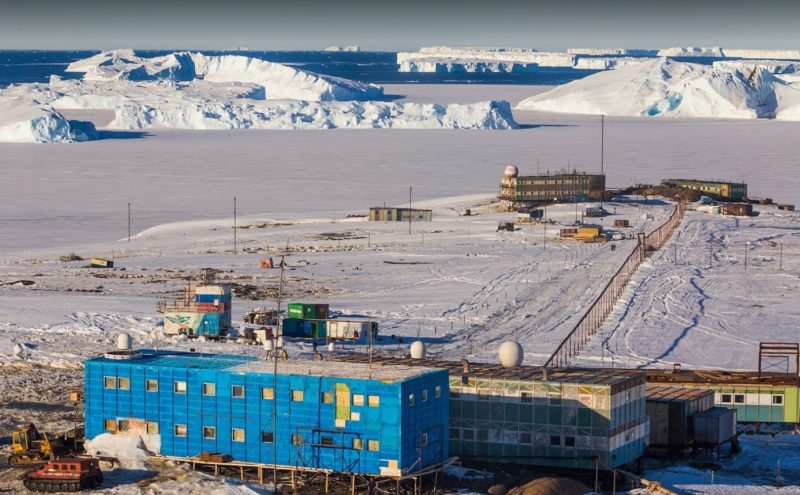
Photo: dx-world.net 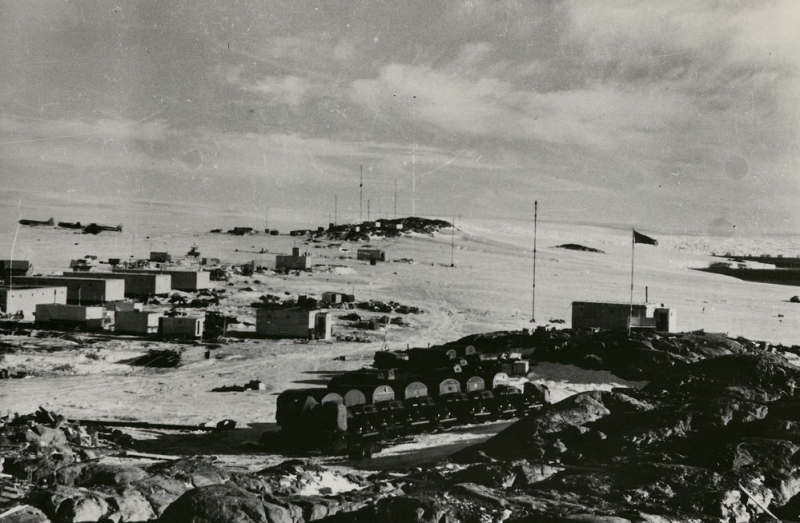
Photo: adam.antarcticanz.govt.nz -
Vice-Commodore Gustavo Argentino Marambio, a forerunner in Antarctic aviation, is honored by the permanent, year-round Marambio Station in Argentina's Antarctica. It can be found on Marambio Island, in Graham Land, on the Antarctic Peninsula, about 100 kilometers (60 miles) away from the Esperanza coastal hamlet. Marambio Base is one of the major cities in Antarctica.
It was the first airfield built in Antarctica at the time of its construction, and due to its adaptability for wheeled landing, for which it is known as "Antarctica's Entrance Door," it is still one of the most frequently used airfields. It is also the most significant station for Argentina on the continent.
Marambio is one of the 14 Argentine bases in Antarctica, with 27 structures spread across an area of 2 hectares. With its library, post office, gym, chapel, hospital, and numerous other institutions, it operates somewhat like a city.
As many as 200 researchers and support personnel may be found working in Marambio's numerous research labs during the summer. However, when the harsh winter arrives, only 55 people are left to maintain the city's numerous infrastructure in Antarctica.Location: Marambio Island, Tierra del Fuego, Antarctica, and South Atlantic Islands Province
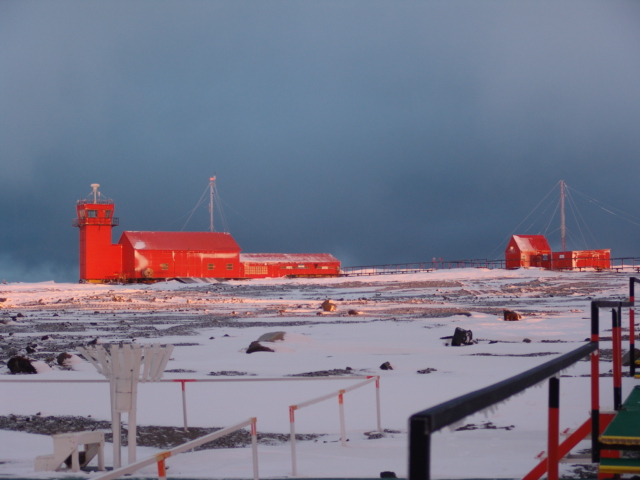
Photo: wikipedia 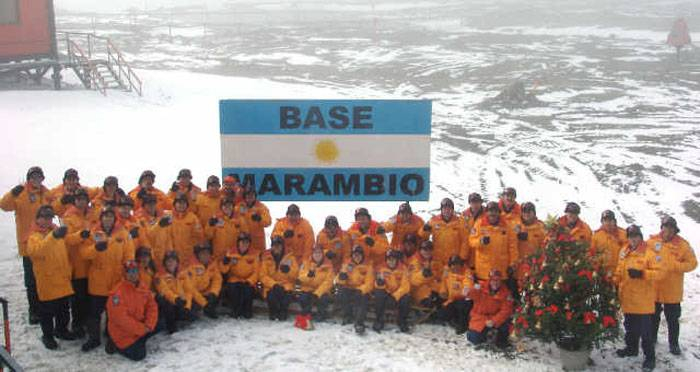
Photo: elheraldo -
Base Chile's main Antarctic base is Presidente Eduardo Frei Montalva. The South Shetland Islands' Fildes Peninsula, a region free of ice, is where it is situated in front of Fildes Bay (Maxwell Bay), west of King George Island. Its geographic coordinates are 62°12′0′′S 58°57′51′′W, at an elevation of 10 meters above sea level, and it is situated next to the Escudero Station, just 200 meters from the Russian Bellingshausen Station. The facility is situated in the Chilean commune of Antártica, which is part of Chile's claimed Antarctic territory (Magallanes y la Antártica Chilena Region, Antártica Chilena Province). It was built in 1969 to serve as a meteorological center. As more buildings were built, the area's name was changed to the one it has today.
Additionally, the bases of the Great Wall of China, General Artigas Station, King Sejong Station, Carlini Base, Commandante Ferraz, Henryk Arctowski, and the Machu Picchu Base are close by (Peru). The Captain Arturo Prat Base, located in Chile, is 50 kilometers away.
It has a 1300-meter-long airstrip that is well-known for being Teniente Rodolfo Marsh airstrip. It serves as a transportation hub for numerous nearby locations, hosting up to 100 domestic and international flights each season.
The Villa Las Estrellas, a residential community close to the base, offers shelter to up to 150 people in the summer and roughly 80 people in the winter. The research station's numerous institutions, which include a store, bank, school, and hospital, make it resemble a small Chilean town.
Location: Fildes Peninsula, an ice-free area, in front of Fildes Bay, west of King George Island, South Shetland Islands
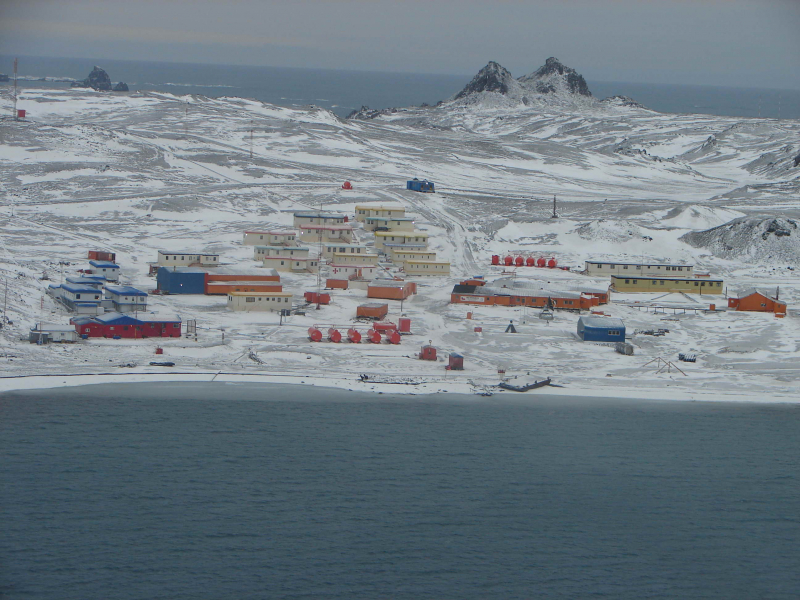
Photo: wikipedia 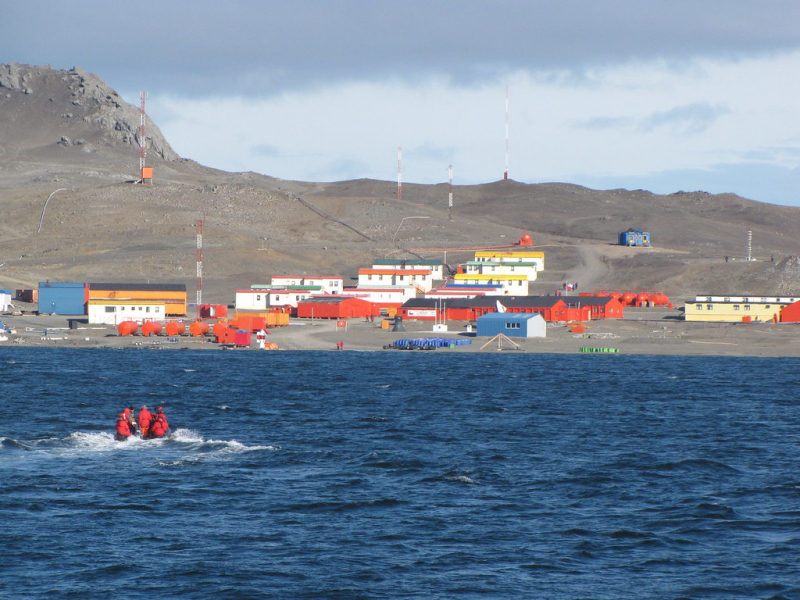
Photo: flickr -
Rothera Research Station is situated on the ice-covered Adelaide Island in Antarctica. It is located on Rothera Point, which bears its name and is regarded as the administrative center of the British Antarctic Territory. It was built in 1975 to take the place of the deteriorating Adelaide Station, which was in use from 1961 to 1977.
The Old Bransfield House, which has a number of communication rooms, meteorological equipment, and computer suites, remains the organization's main hub. Additionally, it houses the base's reverse osmosis plant, which supplies the base with the necessary freshwater.
The scientific center for terrestrial and marine biology at Rothera is the Bonner Lab, which has undergone two reconstructions.
A massive facility called Rothera may accommodate up to 100 scientists over the summer. Any of the Admiral House's 44 residential rooms frequently houses scientists and support personnel. It has toilet and shower facilities just like in a dorm or frat house. The New Bransfield House has spaces for staff amusement, including a TV room, a library, and a bar.
Location: Rothera Point, Adelaide Island
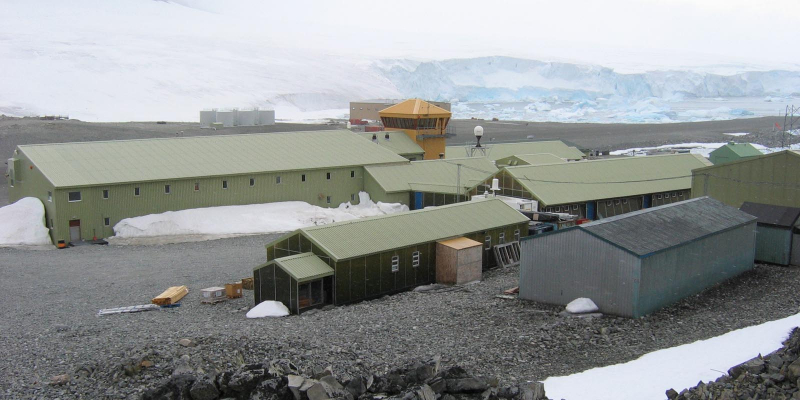
Photo: wikipedia 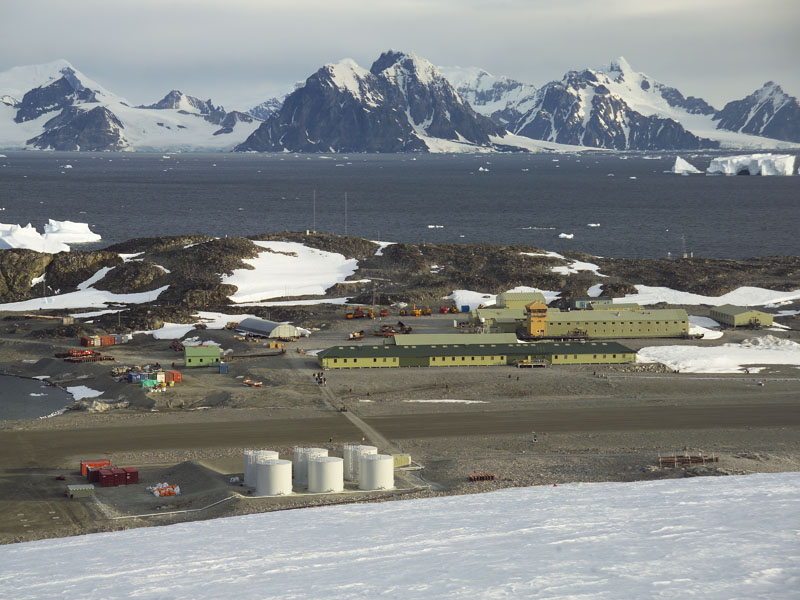
Photo: wikipedia -
On King George Island, in the Chilean Antarctic claim, the Chilean Antarctic Territory, as well as the Argentine and British Antarctic, claims, lies a Chilean settlement and research facility known as The Stars Village. According to the Chilean government, it is a part of the Antártica commune, Antártica Chilena province, Magallanes region, and Chilean Antarctica.
It is situated on the military base President Eduardo Frei Montalva Base. There are only two civilian communities in Antarctica, Esperanza Base in Argentina being the other. It is the largest of the two. It has a 150-person summer population and an 80-person winter population.14 90 m2 (970 sq ft) homes make up the community where the residents of Villa Las Estrellas live. In 1984, Juan Pablo Camacho was born at The Stars Village, becoming the first Chilean born in the Antarctic area.
A postal employee works in the Correos de Chile post office in the summer, and the base command staffs it in the winter. The office is the mail depot and relay station for all mail directed to any Chilean base on Antarctica as well as some other foreign establishments. It gets all of its mail from Punta Arenas. From here, it is delivered by hand, plane, or helicopter. Sending postcards and letters with an Antarctic postmark from the town's post office is another draw for vacationers and philately enthusiasts.Location: King George Island
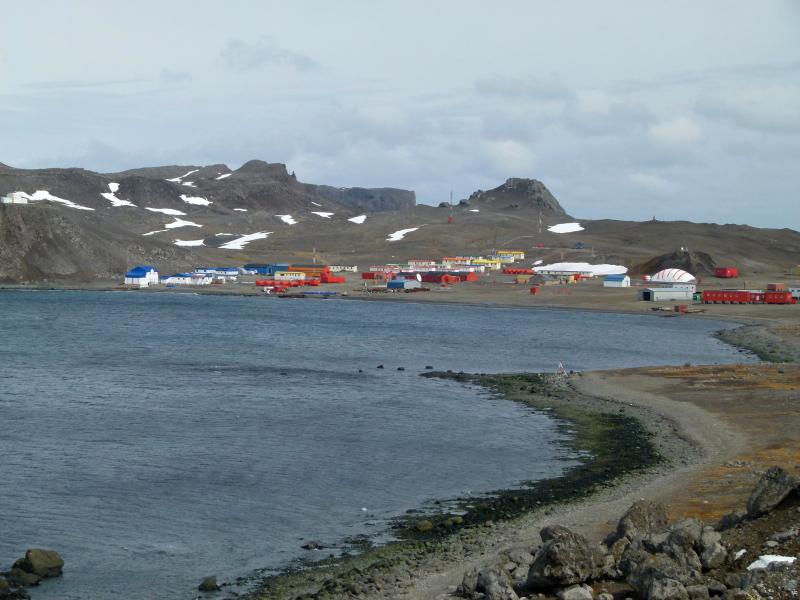
Photo: wikipedia 
Photo: atlasobscura









